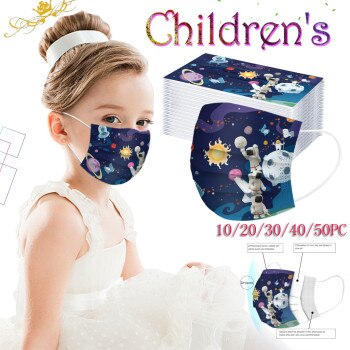
The European FFP2 mask is similar to the N95 mask, and is one of those commonly seen in public worn by dutiful citizens who are attempting to keep everybody “safe”.
The following article highlights the unsuitability of the FFP2 mask for use by children. It’s worth noting that the possibility of not masking children at all is never considered — the discussion is simply about which mask is appropriate for children. Conclusion: the standard blue surgical mask — billions of which now clog the sea beds and coral reefs of the world — makes the best kiddie muzzle.
Many thanks to Hellequin GB for translating this article from the regional German daily Nordkurier:
Completely unsuitable — Stiftung Warentest aborts FFP2 test
Stiftung Warentest advises against using FFP2 masks for children. The breathing resistance was clearly too high in all tested models.
Berlin —They are colorfully packaged and adapted to the size of the small heads. Still, FFP2 masks are not a good choice for youngsters. This is the conclusion reached by Stiftung Warentest after examining 15 models that indicate suitability for children.
Sobering conclusion: none of these masks is suitable for children — the product testers were looking at 6- to 12-year-olds. The reason is that they have too much breathing resistance. Surgical masks are the better choice, especially for continuous use in schools, writes the foundation in the magazine “test” (issue 01/22).
Since there are no values specified in a standard for the maximum breathing resistance of the mask for children, the values for adults were used as a reference for the study. The foundation stipulated that the children’s masks should have values that are only about half as high as the maximum values permitted by the standard for adult models, because six to twelve year old children usually have less forceful breathing than healthy adults and their lung volume is about half as large.
Many fail to meet even adult limit values
However, all tested masks in mini format failed because of the requirement for breathing resistance: none of them even came close to these lower values, and many did not even comply with the adult limit values. The high breathing resistance was already a knockout criterion, according to the Stiftung Warentest. Aspects such as filter effect and fit were therefore no longer checked at all.
The problem is also: if children find it difficult to breathe, they may not put the mask on properly, according to Stiftung Warentest. This allows air to flow in and out relatively unhindered. If you want to protect your child particularly well for a short time in a full lane, you should instead use the 3M Aura 9320+ adult mask, advises Stiftung Warentest. It was already the test winner in the test of adult models. Their breathing comfort is OK for children, their filtering effect is high and they also fit small heads.
Prefer surgical mask at school
However, surgical masks for children are the better choice for permanent wear. Yes, they offer little self-protection. But: they protect others, that is their main purpose. If all the children in the classroom wear these masks, this, in combination with other measures such as regular ventilation, significantly reduces the risk of infection.
Afterword from the translator:
They give with one hand and yank it away with the other…
I still remember that when I was an apprentice we were told — daily — that we could only use a dust mask for 20 minutes MAX if we work in a dusty environment, because of health issues due to the Mask. It was 20 minutes mask on and then a minimum of 30 minutes mask off.
Weird how these rules are being thrown out the window when it strengthens state power and makes the coffers ring for the select few.

The current rule in Germany (DGUV Regel 112-190 “Benutzung von Atemschutzgeräten”) to keep a mask-wearing employee insured, is no more than 75 minutes on and no less than 30 minutes off.
Stiftung Warentest’s recommendation is over a year out of date. One of the U.S. Centers for Disease Control found that vented N95/N99 half-masks gave more reliable “source” control (protecting others) and recommended them over surgical masks. Another of the CDCs, however, still advises the public not to wear vented or N95+ masks. Is it surprising when people doubt the CDC?
“The emails from early in 2020 as COVID-19 spread from China around the world show Dr. Fauci advised several people and told multiple media outlets that masks were not necessary, didn’t protect people, and should not be mandated—a significant departure from what he and his team of national health officials would later say in support of mask mandates.”
https://townhall.com/tipsheet/spencerbrown/2021/06/02/fauci-emails-n2590347